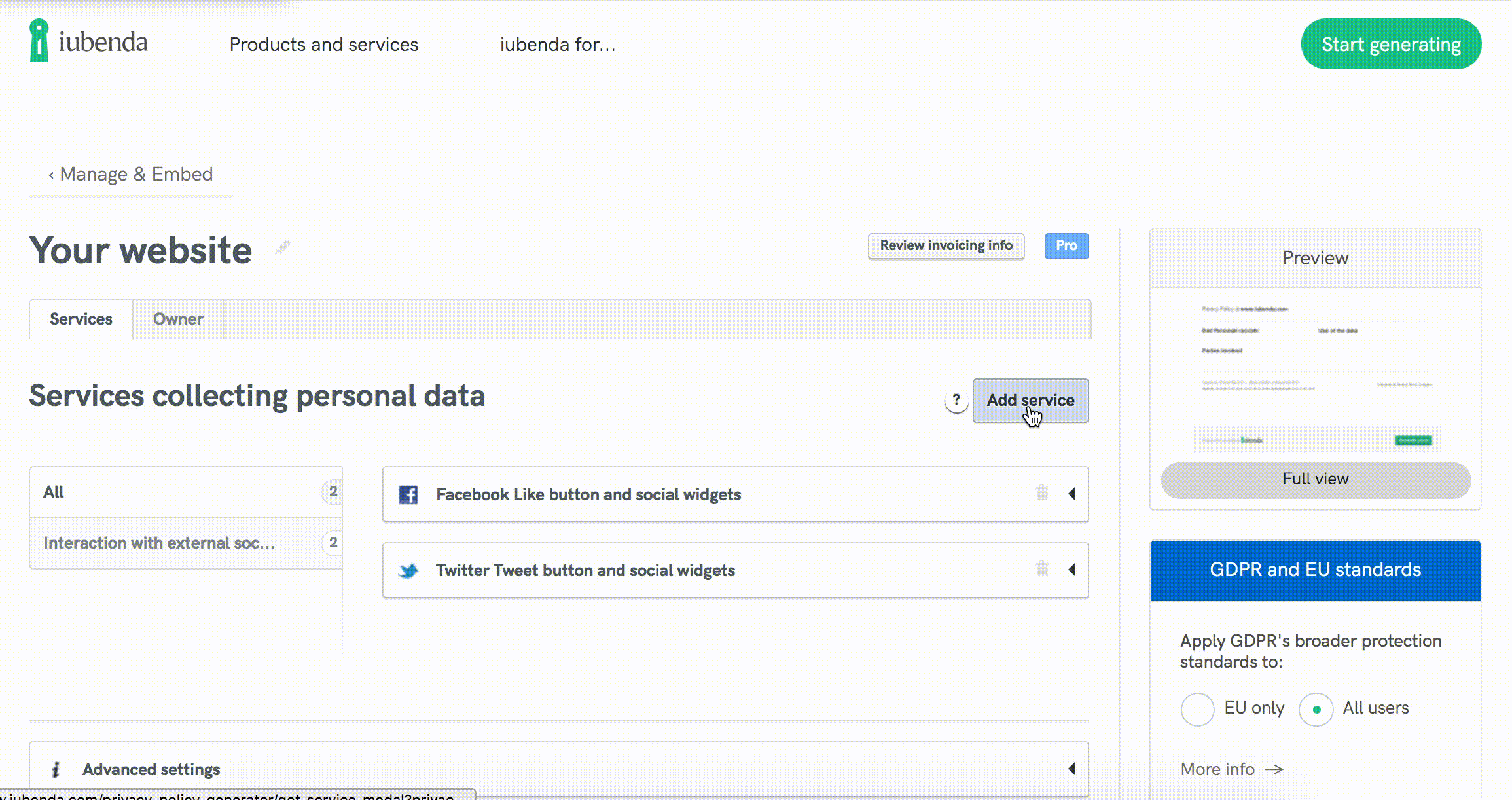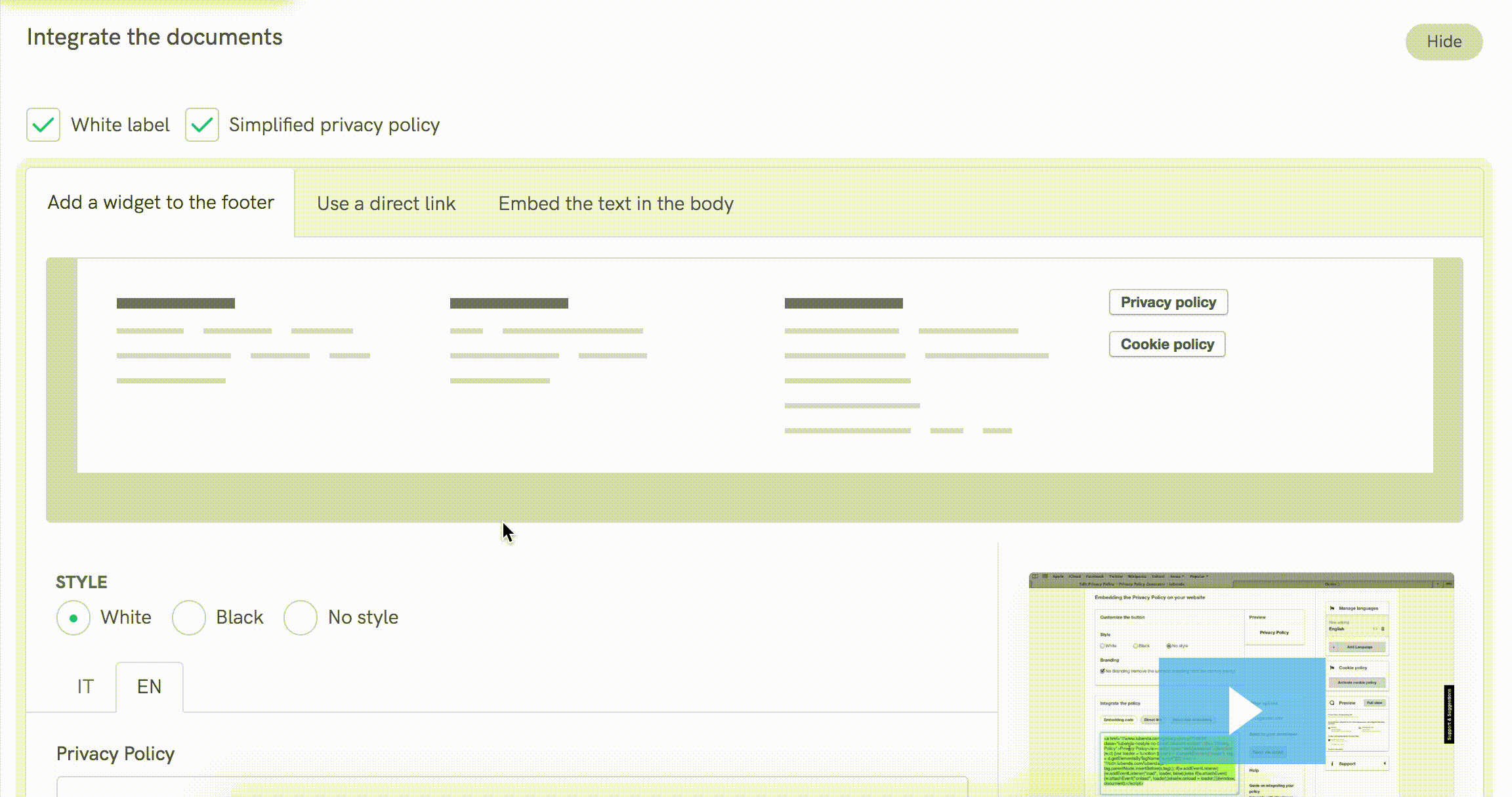Want to create a privacy policy? Generating and setting up your privacy policy with iubenda is incredibly easy.
In this post, we’ll show you how to generate your own custom privacy policy. If you need any additional help, please feel free to message us via the chat window (you can find it by clicking on the green help button on the right and then clicking on the live chat button at the top). We’re happy to answer any of your questions.
👋 Before you start, if you haven’t already, you’ll need to sign-up here.
Once you’re signed up, it’s time to get started.
The process is simple and pretty straightforward:
💡 If you already have a similar site/policy, you don’t have to start from scratch: you can take advantage of the site duplication feature.
Your privacy policy needs to be adapted to your site’s or app’s data collection practices. You do that by adding a service.
Services generally fall into two categories:

We’ve added a Site Scanner within the services window of the generator which allows you to quickly inspect your site in real-time and identify which services you need to add to your policy. Do note that although our scanner is powerful, it can only scan for technologies that are directly integrated on your pages. You will, therefore, still need to add manually the clauses that relate to data processing activities like newsletter sending.
When figuring out which basic services to add to your policy, it may help to ask yourself the following questions:
Eg. newsletter forms, contact forms, comment systems.
Most likely these services also process user data in some way and therefore must be included in your policy. Some common ones are:
In most cases, the purpose of the data collection is standard and automatically included within the services added, however, there are some instances when you generate your privacy policy where you’re required to add additional disclosures. Some common ones are:
You can also easily add custom services by simply filling out the built-in form.
You can read more about what you’re legally required to disclose and obtain consent for in our Getting Started Guide.
Check our guide on How to Activate US Compliance within the Privacy Cookie Policy Generator
When the privacy policy is ready it needs to be added to the site. This is done by using the embedding code we provide.

You can make the privacy policy available on your site/app in the following ways:
The video below shows how you can easily add the privacy policy to your website:
Additional links you might find useful here are:
We constantly monitor the major legal regulations and automatically update your policy to keep it valid and up-to-date, however, should you need to manually update your personal information, contact details, custom clauses or add additional services, you can simply log back into your iubenda dashboard and make changes anytime.
